
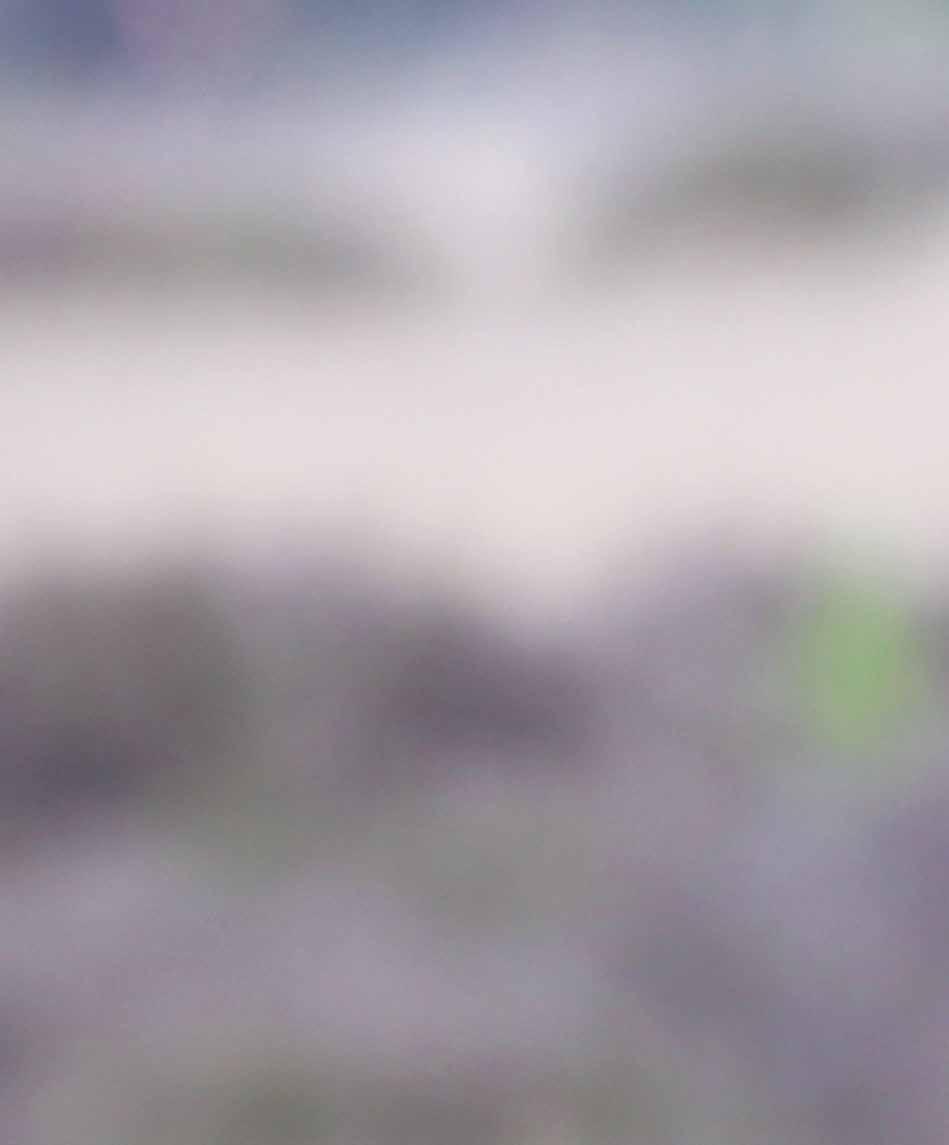
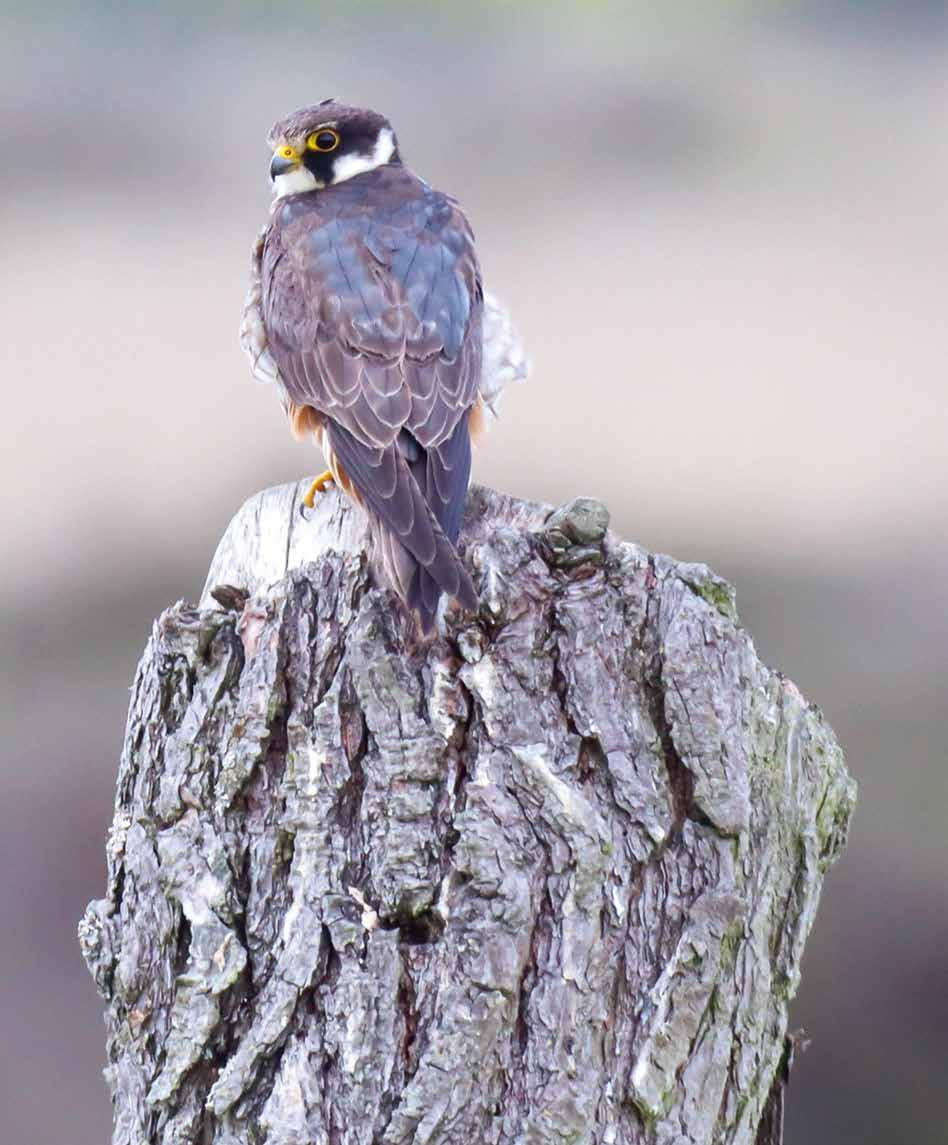
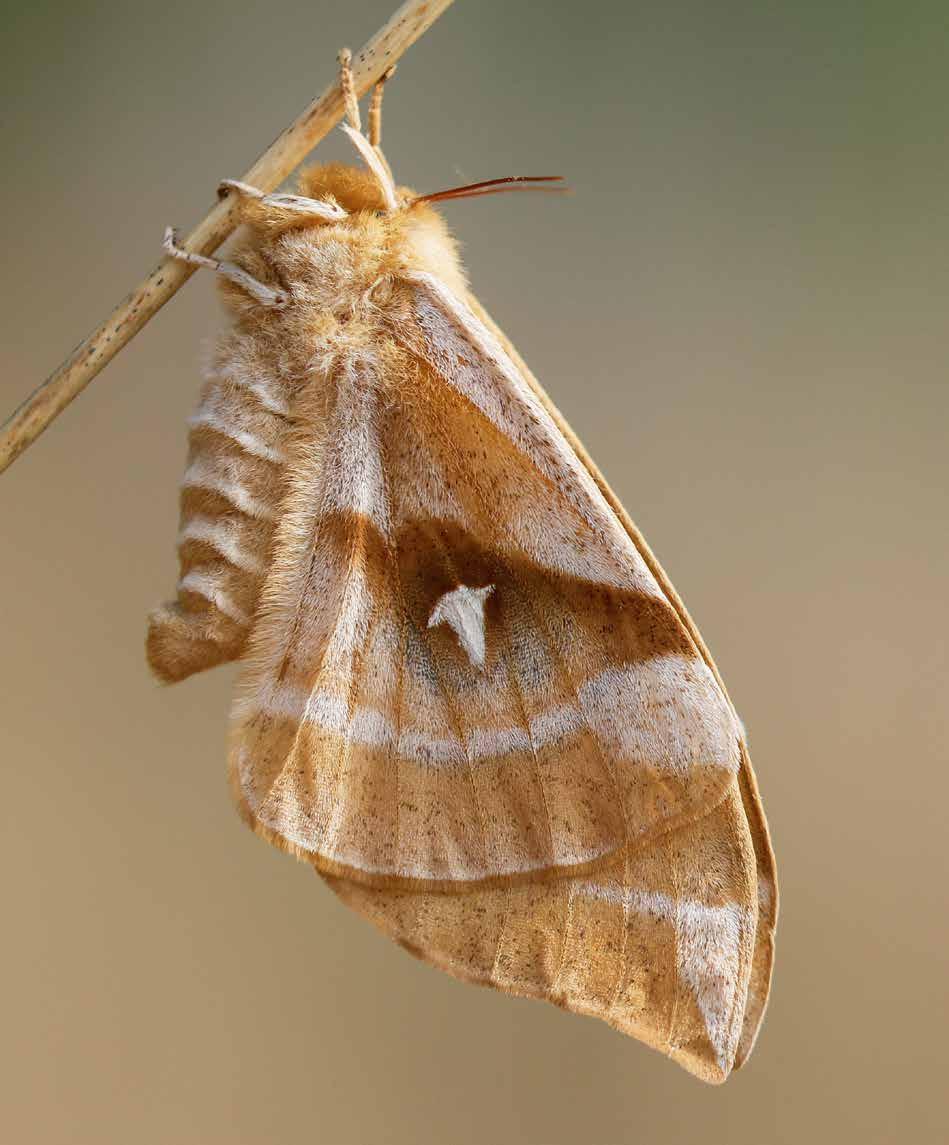





Author Menno Haanstra
Scientific Advisory Group
dr. André Jansen
prof. Yme Kuiper
prof. Gert-Jan Nabuurs
dr. Jan den Ouden
prof. Wim van der Putten
prof. Joop Schaminée
prof. Jan Sevink
prof. Theo Spek
prof. Marcel Visser
prof. Michiel Wallis de Vries
De Hoge Veluwe National Park Foundation
Waanders Publishers, Zwolle
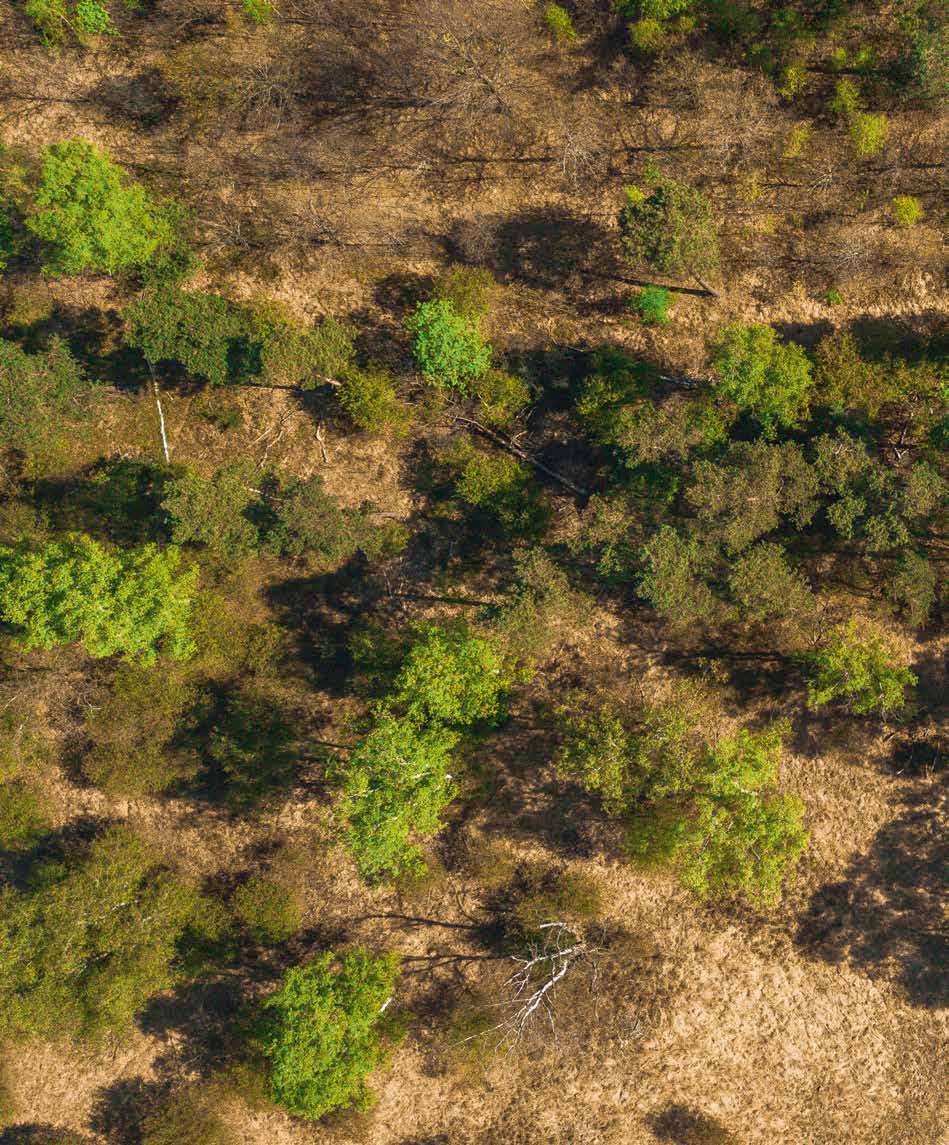

Foreword by Jean Rummenie, Minister for Fishery, Food Security, Horticulture and Nature Conversation
Introduction by prof. Jan Sevink
1 Biography of the landscape
2 From practice to science and experience
3 The landscapes of De Hoge Veluwe National Park
4 The human aspect: management
Looking
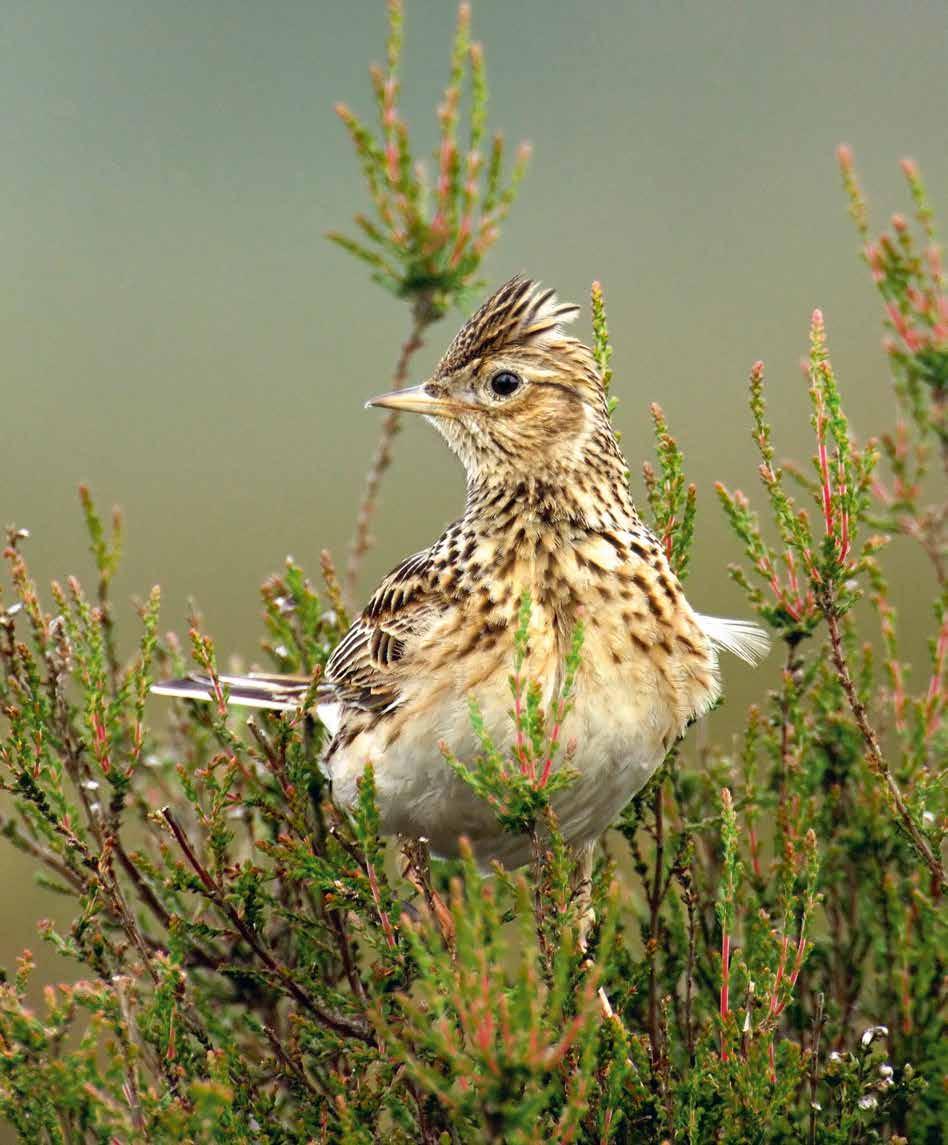
‘Come on everyone, let’s go outdoors...’. Around ninety years ago, when high summer arrived, people would follow the example of a songbird. In the 1930s, the golden oriole symbolised the rush outdoors and the need to make the most of the season with a family picnic or simply by filling one’s lungs with healthy fresh air. A private park in the Veluwe satisfied our longing for ‘the outdoors’.
In the following decades, not only were swing-gates, swimming lakes, cycling and walking routes and a lot of protected nature introduced to the Netherlands, but also large numbers of highways and hydraulic structures. Our country became urbanised. The urge to escape outdoors remained, and the appreciation of Dutch flora and fauna, experienced by many in the new parks, was inseparable from the time-honoured affection for cows in pastures and for dikes, rivers and skies.
In the 1980s and 1990s, a succession of governments demarcated nature, trying to strengthen it with design drawings and international guidelines. We learned from that approach. The resilience of people, nature and communities forms the leitmotif of my policy. Strength arises from connecting to actual dynamics, when administrators, owners and users are given the space to determine – within legal frameworks – how nature and economic development can go hand in hand. While they might sound different, these are in fact two sides of the same coin.
Like any park, the 5,400-hectare De Hoge Veluwe National Park has its own dilemmas, idiom and evolution. This book and the book of nature tell stories about this in different ways. In both, we find the resilience of man and nature. And you never know: during a walk, you might spot the golden oriole that still makes its home in our country.
Jean Rummenie Minister for Fishery, Food Security, Horticulture and Nature Conversation
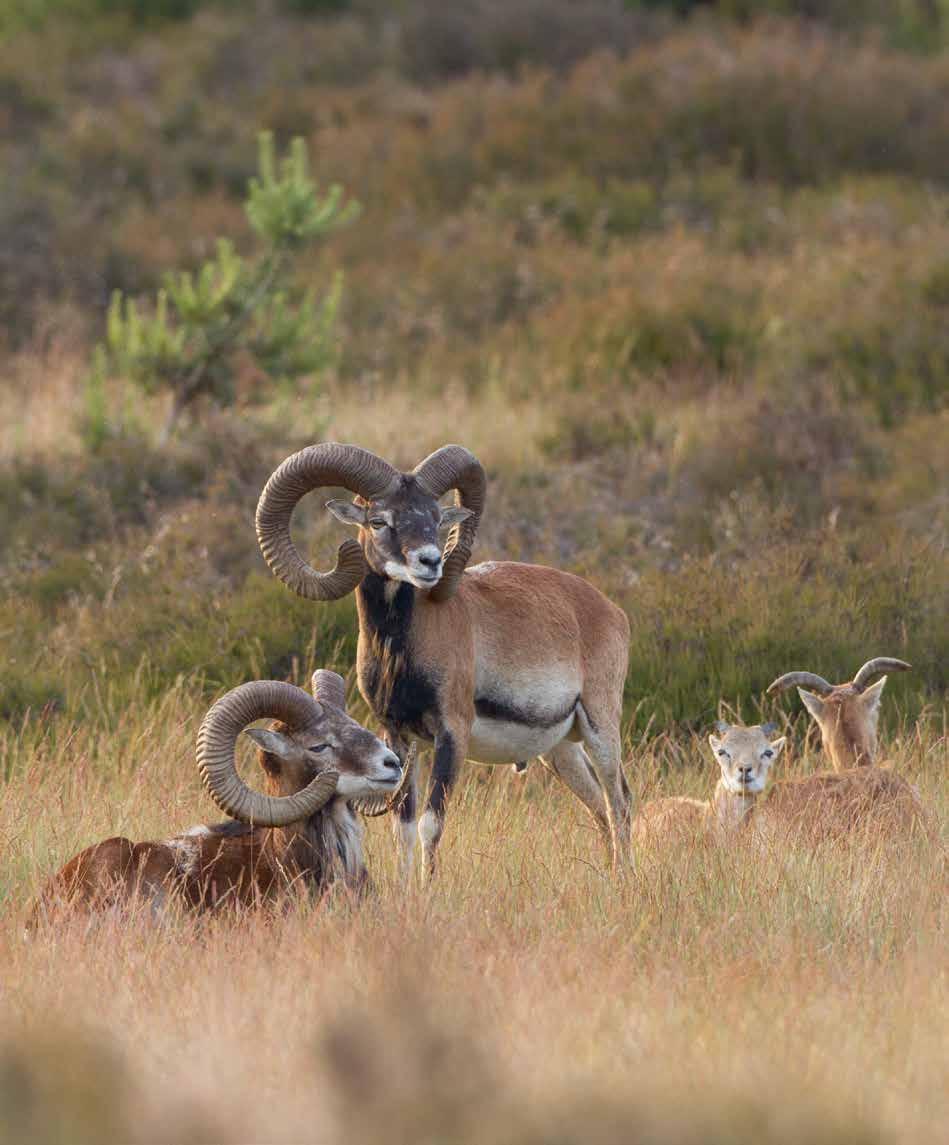
PROF. JAN SEVINK
Today’s De Hoge Veluwe National Park Foundation was established in 1935. The objective of the foundation was – and still is – to conserve the special Veluwe landscape that is contained within the Park. With its unique cultural history and exceptionally diverse flora and fauna, the ‘Veluwe landscape’ is the result of many centuries of interaction between humans and nature. For the former occupants and users of such landscapes, life was by no means easy: the soils were poor, water scarce, and the sand started to drift, posing a threat to agriculture. For this reason, very few farmers lived in the area, which could best be described as a ‘waste land’ of heath and sand drift, with a few woods or bushes here and there.
Anton Kröller and his wife Helene Kröller-Müller were among the first to appreciate the value of this landscape. They laid the foundation for today’s Park. By fencing off the site they protected the early-twentieth-century landscape, and with the management they established they avoided, as it were, the roll-out of the rational parcellation, agricultural reclamation and afforestation that affected much of the rest of the Veluwe, and as a result of which the traditional Veluwe landscape has largely disappeared.
De Hoge Veluwe National Park still pursues the same fundamental objective today: to use consistent, active management to conserve this traditional landscape with its characteristically high level of biodiversity. Much has changed in the Park’s ninety-year history. For many years, management entailed maintaining heathland and sand-drift as effectively as possible with measures such as grazing and
topsoil-stripping. In practice, this amounted to slowing down or halting the natural succession of vegetation that occurs in sandy landscapes such as these, and that, without intervention, inevitably leads to afforestation. Typical measures included keeping a herd of mouflon, with the explicit aim of holding back the spread of Scots pine, and the reactivation of the sanddrift area known as De Pollen. Another example was game management; this was aimed, among other things, at maintaining woodland rejuvenation with broadleaf species, which become endangered when grazing pressure is too high.
Nowadays the Park increasingly faces a very different external problem, which has major consequences for conservation. Broadly speaking, this involves three issues: nitrogen deposition, climate change, and big-game crossings in the context of the juridification of nature policy and nature conservation in the Netherlands.
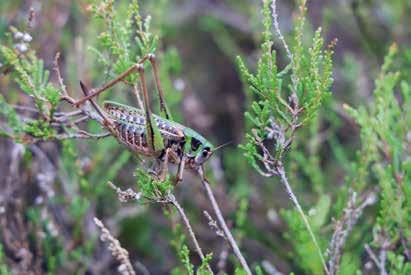
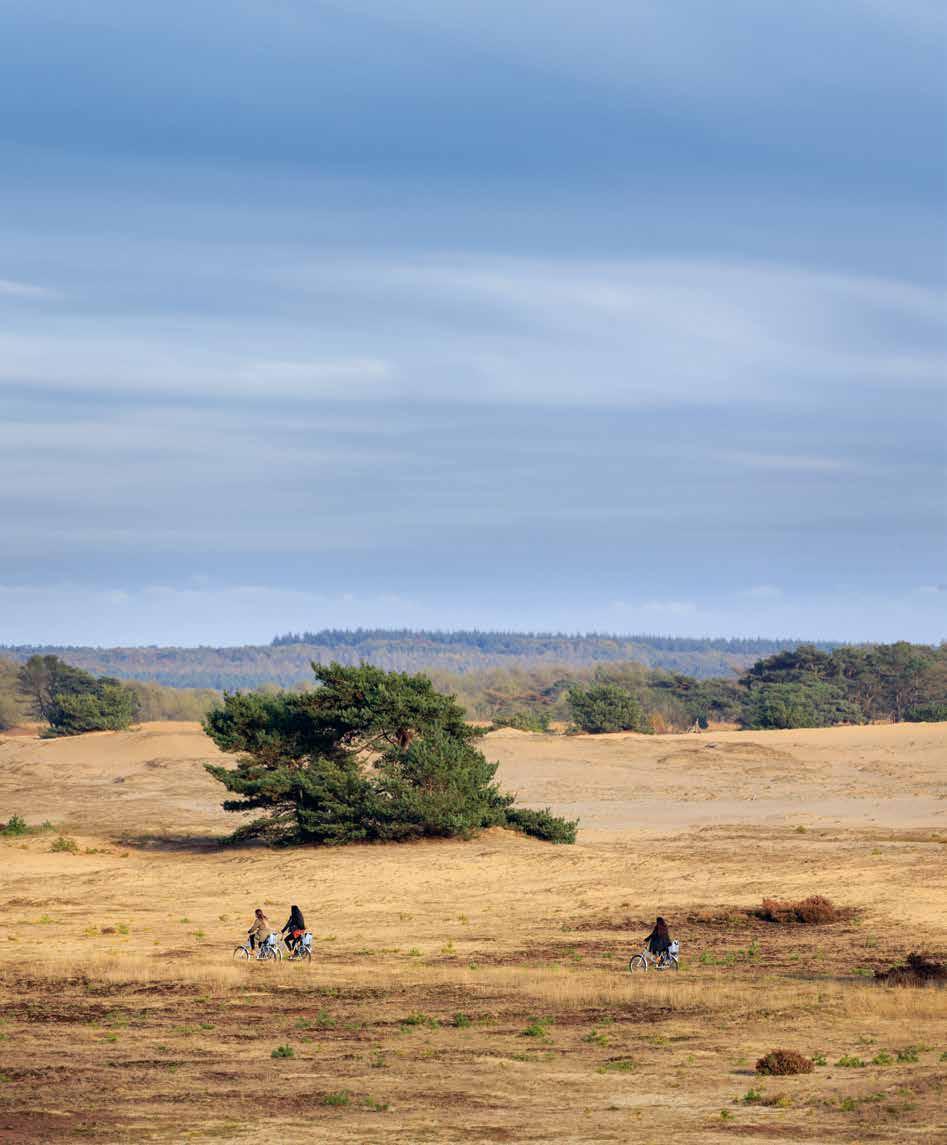
The ecosystems in De Hoge Veluwe National Park – very poor sandy soils with low-lying vegetation (such as heaths and heath grasslands) – are among the systems that are most sensitive to the negative effects of nitrogen deposition. The latter has led to serious soil acidification and depletion in the Park, threatening the survival of many plant and animal species; not only in areas with low-lying vegetation, but also in the forests. By means of innovative but expensive research and management, the Park is trying to ‘mitigate’ the effects, as the term goes. This has involved strengthening these ecosystems by applying rock dust, for example. But the Park has no control whatsoever over the cause of the problem, nitrogen deposition.
Certainly if it develops towards the more problematic scenarios that are generally anticipated, climate change will threaten species that lack resilience to the expected climate conditions. One such example is the crowberry (Empetrum nigrum), which still grows in the northern part of the Veluwe, but there will also be negative consequences for other species of heather. When it comes to woodlands, a major impact on species composition and productivity is expected, for example for beech and Norway spruce, which are less resilient to the predicted changes. And this in turn can be expected to affect the fauna related to tree species. The Park can use planting to try to adapt the forest composition to the predicted changes in growing conditions, but it will not be able to prevent either the composition of the forest or the forest fauna itself from changing. Unfortunately, it is highly likely that many special species of plants and animals will disappear in the process.
Finally, there is the matter of the two big-game crossings. To date this has mainly been reflected in the access that the wolf has gained to the Park, but it is not inconceivable that the rewilding of Dutch nature will continue, for example with the arrival of bison, elk, wild horses and wild cattle. The bear is also part of the original fauna of the Netherlands, and only disappeared around 1000 AD. If and when it will return to the Netherlands is not known, but other predators, such as the lynx and the wildcat, are on the way. Whereas in the past, the Park was able to determine which large mammals would live inside the fence and what role they would play in conservation, this has changed fundamentally with the two big-game crossings. The management’s efforts to conserve the Veluwe landscape have hardly become any easier as a result, because targeted grazing management is simply an essential part of their work. The juridification of nature policy and nature conservation translates into legal action and protest by individuals and pressure groups who do not fight shy of (calls for) destruction and violence, which invariably costs the Park a lot of time and money.
This shift from managing the existing situation to responding to external problems over which the Park has very little control is a major change, and one that is making significant demands of the Park. In this anniversary book, we introduce the reader to the history and qualities of the Park, and above all to how the Park is innovatively and creatively shaping this management. It is important to make a wide audience aware of these issues, not least in an era when the external problems are becoming so great.
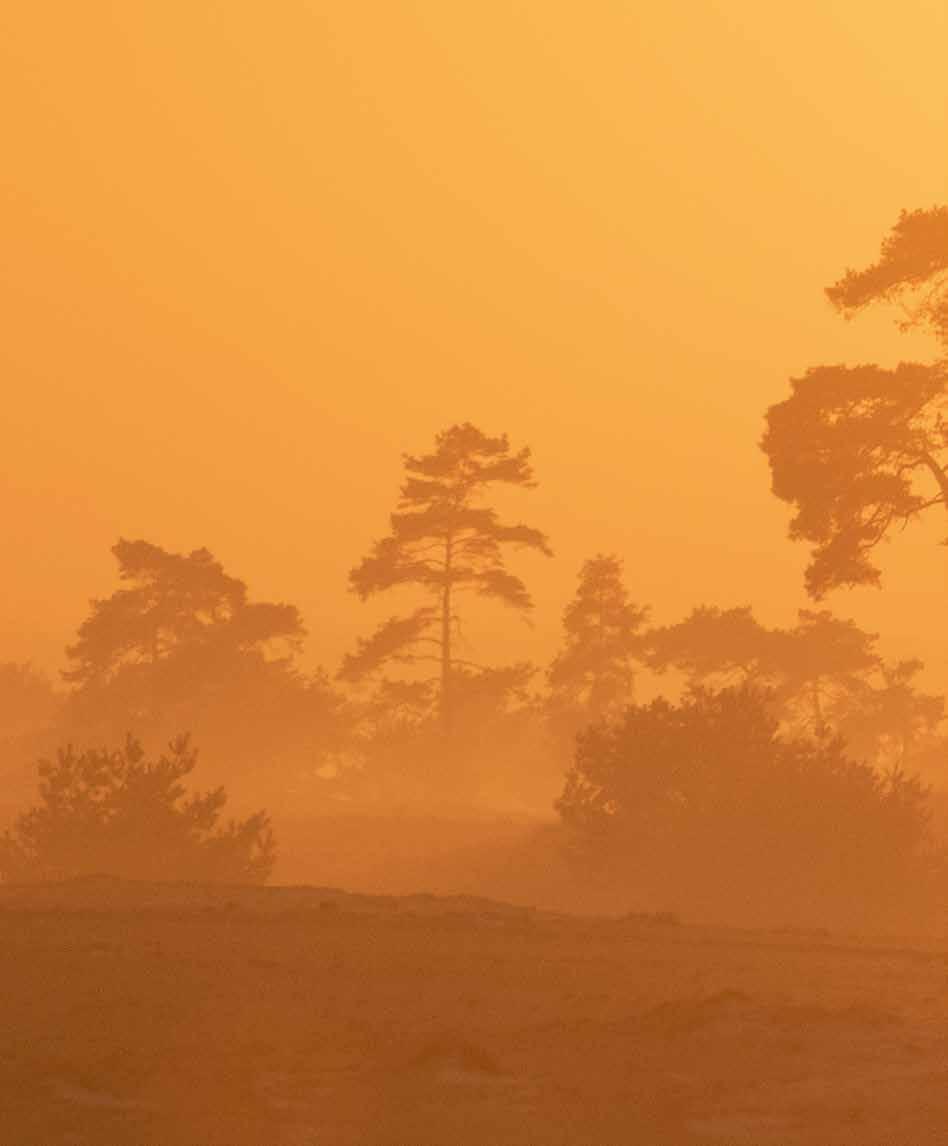
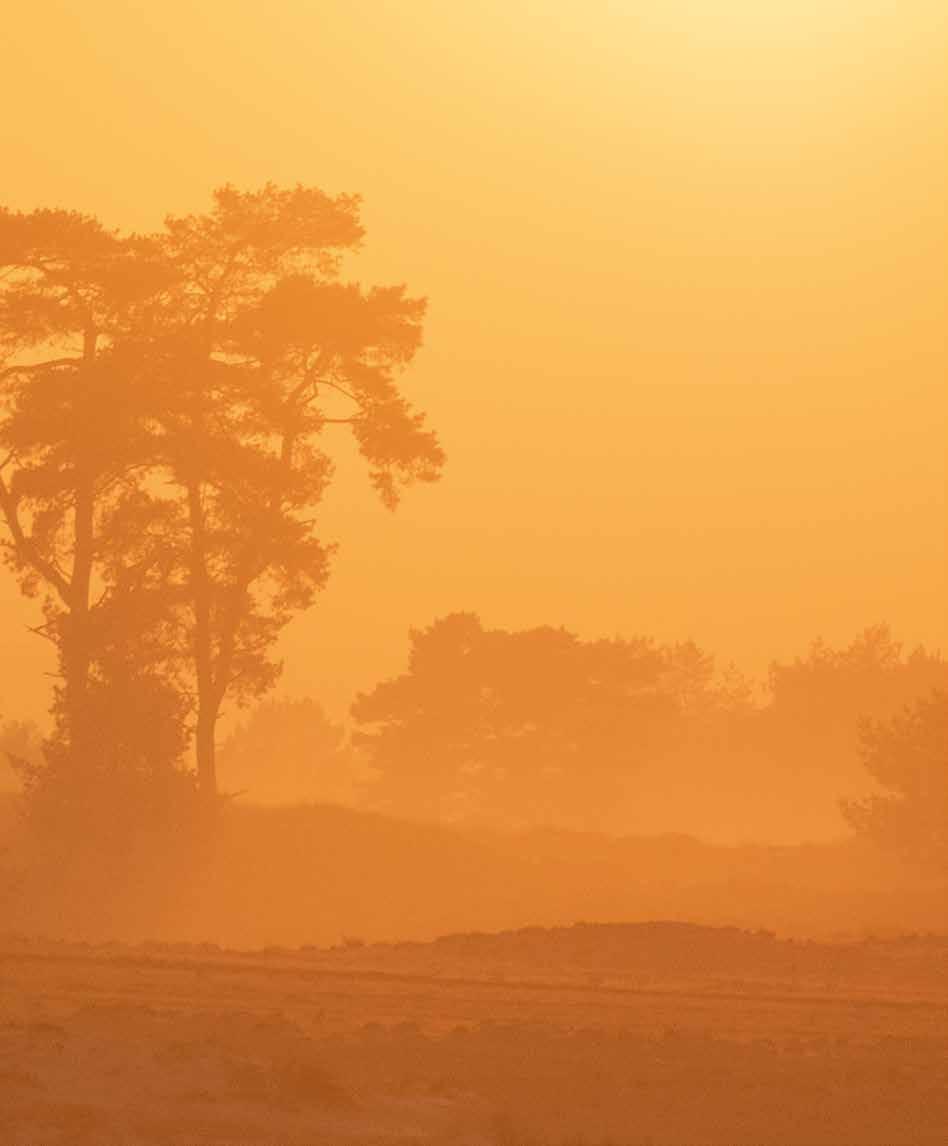


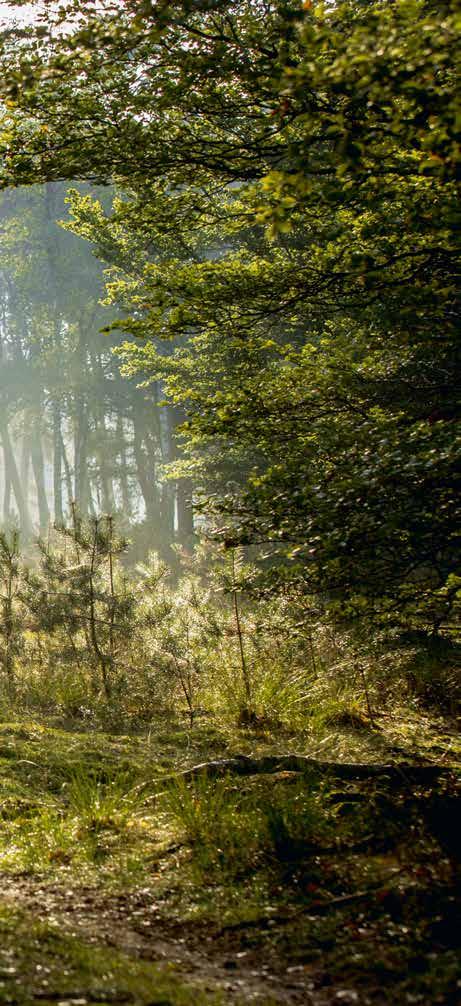
Walking across De Hoge Veluwe National Park, you see how the landscape constantly changes around you. You stride across dry heath, dotted with heather and purple moor-grass, only to notice further on that the ground has become wetter, with fens amongst the bell-heather and peat moss. You plod across sand drift – that inhospitable, wind-buffeted terrain, with young pioneer species taking root at the edges. You wander through reclaimed woodlands; further on, you enter an old forest, with its impressive ancient oaks. Such a diversity of landscapes, animal and plant species, on such a scale, is virtually unique in the Netherlands. It is the product of almost a century of management, during which the landscape, flora and fauna were systematically and consistently conserved. But how did it all start? What awaited Anton and Helene Kröller-Müller here in the early twentieth century, when they established their estate?
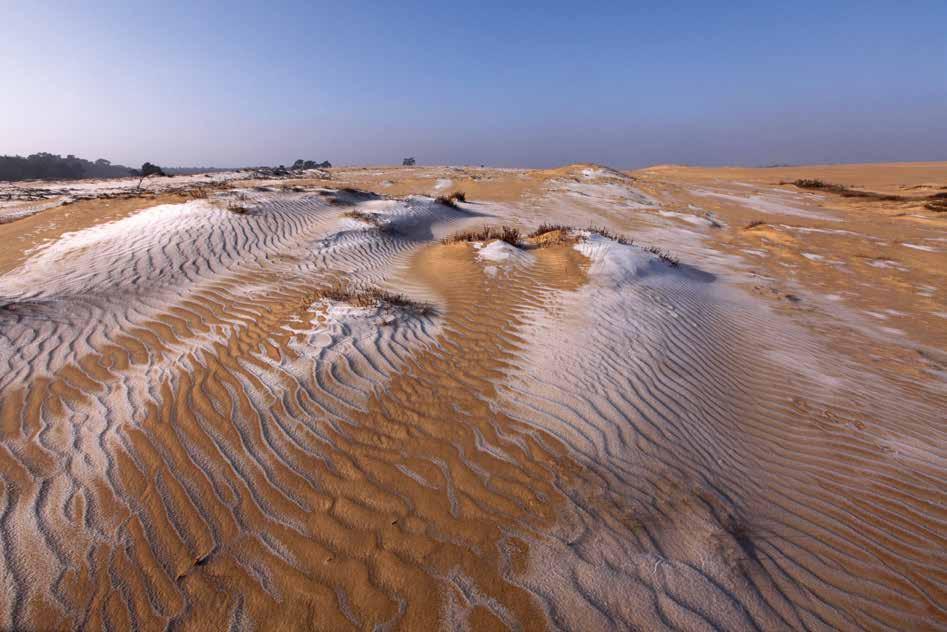
CA 200,000 – 10,000 YEARS AGO
F1
or millions of years, the area that is today the Netherlands was a flat, low-lying delta, crossed by rivers making their way to the North Sea. Carried by these rivers were the sand and gravel that would ultimately form the foundations of the Dutch landscape we know today. When the penultimate ice age, the Saalian, began around 350,000 years ago, a large land-ice sheet formed in Scandinavia, spread across north-western Europe, and eventually pushed into the Netherlands as an enormous mass of ice. Between ca 160,000 and 150,000 years ago, the ice sheet advanced about halfway across the Netherlands; the line between Haarlem and Nijmegen. Ice tongues –
the narrow, extended tips of a glacier – protruded outwards from the land ice, southwards into the country. Their enormous weight pushed the ground aside, creating elongated hills known as moraines 1 At the ends of these, large meltwater fans emerged, where the meltwater that broke through the moraines formed large alluvial fans.
The lateral moraines and associated meltwater fans – which were so decisive in shaping the Veluwe Massif, including De Hoge Veluwe – formed in a relatively short period; around 5,000-10,000 years after reaching the Haarlem-Nijmegen line, the ice sheet began
to melt and retreat north. In the meantime, two moraines that would be important for De Hoge Veluwe had formed: the elongated East Veluwe moraine and the smaller Oud Reemst moraine. Meltwater created fan-shaped sandy plains and meltwater valleys, still visible on the Oud-Reemsterveld, among other places. At the car park near the Bosje van Staf observation point, gravel can be seen everywhere; it was left behind by the meltwater of the ice sheet.
During the Weichsel ice age (115,000 to ca 11,700 years ago), the temperature plummeted once more. It became so cold that polar storms occurred, carrying in large amounts of sand from the west, especially from the North Sea, which was largely dry at the time. The wind deposited a metre-thick cover of sand on the bare landscape (called ‘dekzand’ or ‘cover-sand’ in Dutch). Wind-borne sand deposits are not found on higher parts of the moraines; as the wind was too strong there, the sand never settled. Sometimes sand ridges and dunes formed; examples in the Park include the sand ridge between the Otterlose Bos and De Pampel, and the barchan (crescent-shaped ridge) of De Kemperberg.
How the Veluwe was formed
The Veluwe is part of what geographers call the ‘Central Dutch sandy area’: a sandy region with hills. Due to the hills, the Veluwe rises above the surrounding countryside like a massive forested area. The highest point in the Veluwe is Signaal Imbosch, a 109.9-metre-hill in the Veluwezoom National Park. The highest point in De Hoge Veluwe is 57 metres; you can find it near De Roek in the northeast of the Park, where the Deelense Veld transitions into forest.
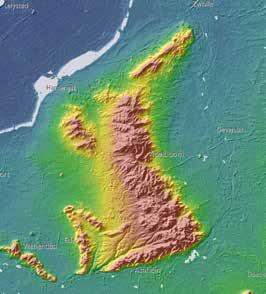
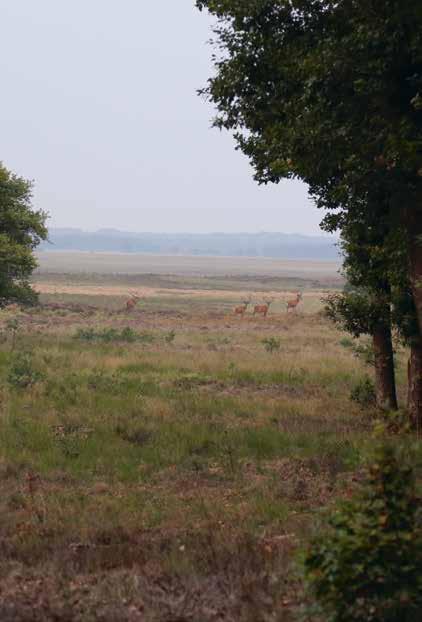
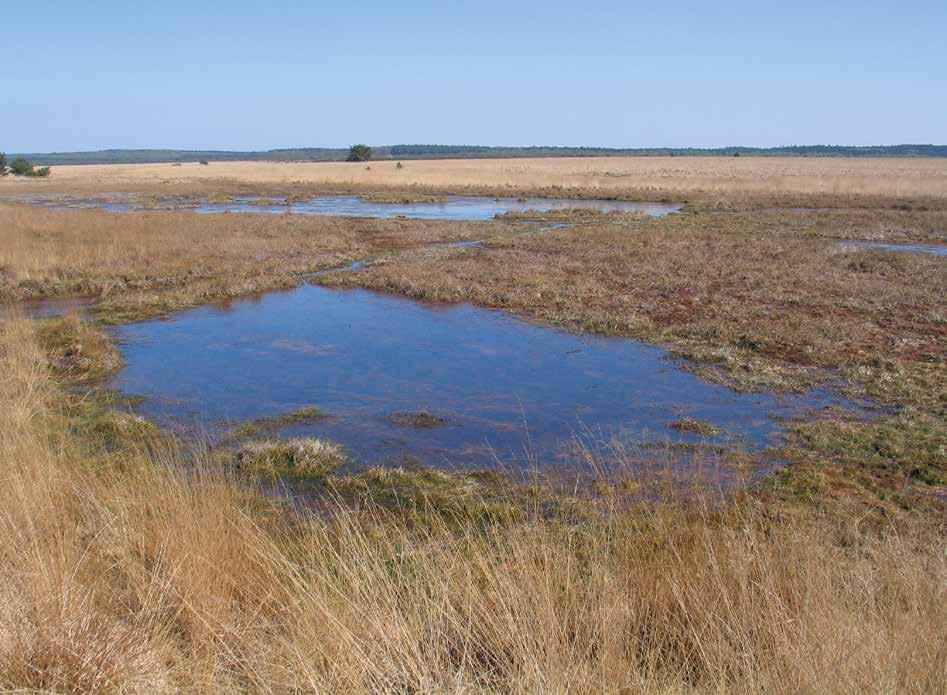
The Veluwe is the highest and widest moraine complex in Europe. As the Park’s moraines are relatively low, they are not easy to spot in the landscape. In the south of the Park, there is a low ridge, the Oud-Reemst moraine, which runs northeast from Lunteren via Oud-Reemst. It runs over the Kompagnieberg, via the Deelense Zand to the Deelerwoud, and connects to the East Veluwe moraine there.
The ice sheet produced a large amount of meltwater, which collected between the ice and the moraines. At one point, that water broke through the moraine and formed deep valleys: ice meltwater valleys, often filled with very large sediment (boulders), mostly brought by the land ice from the north. A few of these ice meltwater valleys are still found in the Park today, such as the IJzeren Man on the Deelense Veld.